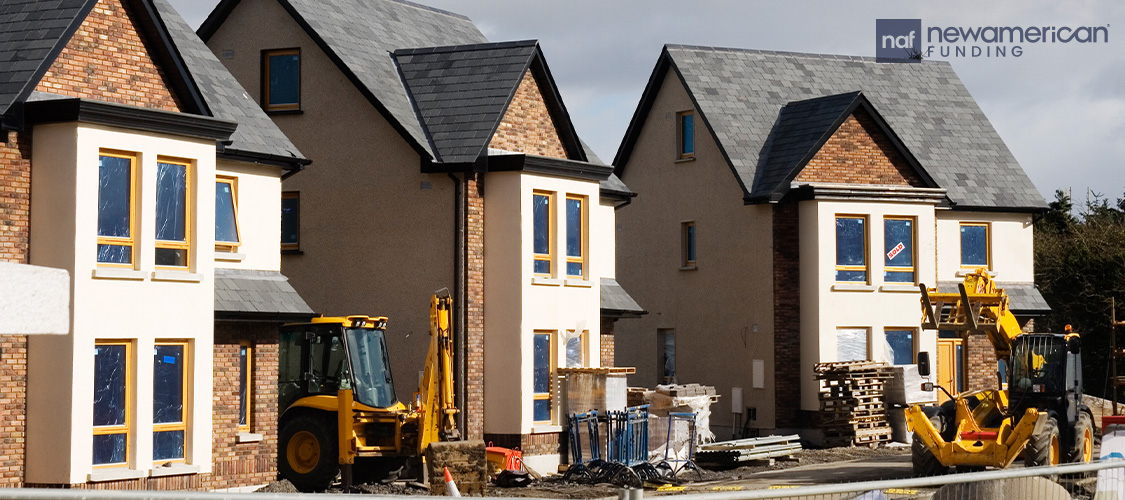Housing News
A Mini-Correction May Be Brewing in the Housing Market—and It Could Give Buyers Some Relief
July 1, 2025
There are signs that the U.S. housing market is slowly shifting to favor buyers in a growing number of places. Mortgage rates may remain higher than they were a few years ago, but the affordability pressure on buyers is starting to ease.
More homes are for sale, home prices are stabilizing or softening, and buyers have started regaining leverage.
However, those hoping prices will come down like they did during the Great Recession are likely to be disappointed.
There are still many people eager to purchase homes, the mortgage market has been strengthened since the financial crisis, and homeowners have near-record amounts of equity in their properties. That is expected to keep the market stable.
However, even a minor market shift that could be significant for individuals who have struggled to purchase a home in recent years.
More homes are for sale and they’re taking longer to sell
One big perk for buyers this year is there are more homes to choose from.
In May, there were 31.5% more active listings compared to a year ago, according to Realtor.com’s Monthly Housing Market Trends Report. That pushed the total number of homes for sale above 1 million for the first time since before the COVID-19 pandemic.
Meanwhile, homes took longer to find buyers. That means folks had more time to visit the property and decide if this was the right home for them.
The median time on the market was 51 days, six days longer than the same period in 2024.
“I can tell you in North Texas, the market’s correcting,” said Jennifer Vokolek of REMAX DFW Associates in Dallas, Texas.
She’s now seeing many more homes for sale than there are buyers to scoop them up. Housing inventory in the Dallas metropolitan area shot up 44.8% year-over-year in May and prices dipped 3.2% over the same period, according to Realtor.com data.
That means buyers have choices—and with it, leverage. When housing stock increases, buyers can afford to be more selective. They can compare homes and negotiate a better price.
More homes also equals fewer bidding wars and room to ask for seller concessions, such as contributions to closing costs, mortgage rate buydowns, and a lower price.
Price growth has stalled

With more competition from sellers, many are having to cut prices to attract buyers.
Nationally, the median list price was $440,000 in May, up just 0.1% from the previous year, according to the Realtor.com report.
However, the pace of price cuts is accelerating. The May data showed that 19% of listings on Realtor.com had been reduced, up from 16.7% for the same period last year.
Indeed, Zillow’s June Home Value and Home Sales Forecast calls for a 1.4% decline in home values in 2025. This is the first projected annual drop since the Great Recession, although it is much smaller in scale.
Real estate investor activity is cooling
Investor activity is declining as well. That’s good news for buyers who may not have to bid against as many deep-pocketed home flippers and potential landlords.
In 2024, investors accounted for 13% of home purchases, according to Realtor.com’s Investor Report. But they also represented a record-setting 10.8% of home sellers—narrowing the net investor buy gap to just 101,300 homes, the smallest since 2020.
This shift suggests institutional and large investors are pulling back from buying up homes.
“Investors have moderated purchases because of persistently high interest rates,” said Bruce Ailion of RE/MAX in Atlanta.
With investors now more eager to sell their homes, owner-occupants are getting ahead. They have more listings to choose from, less competition, and greater negotiating power.
Other areas where homebuyers are gaining leverage

Buyers who are shopping for new construction are also seeing gains. There is a new wave of builders offering incentives, including mortgage-rate buydowns, closing cost credits, design allowances, and outright price cuts, to gain homebuyer’s attention.
About 37% of builders reduced prices in June, according to the National Association of Home Builders. The average cut hovered around 5%. Additionally, nearly two-thirds offered financial incentives to help keep deals intact.
That’s a sharp contrast to the pandemic-era playbook, when demand outstripped supply and concessions were off the table.
What this means for homebuyers today
Buyers looking to capitalize on this shift in the market should come prepared. That means getting fully approved for a mortgage, monitoring prices in your area, and searching for listings with longer days on the market or recent price reductions.
In some cases, making an offer under the asking price may now be a viable strategy, especially if the seller is motivated.
However, it’s not a buyer’s market everywhere. Yet in many metros, it’s no longer a seller’s market either. While the shift is national, its intensity varies by region.
In the South and West, where housing stock has grown most rapidly, price cuts and buyer leverage are more visible.
The Northeast and Midwest remain more competitive, with lower inventory and relatively stable prices.
Like the old adage goes, all real estate is local.
“It’s very important to understand the local nuances and to be comparing like to like,” said Nikki Beauchamp of New York City’s Sotheby’s International Realty.
Buyers should understand the ins and outs of their local markets and may want to work with an experienced real estate agent to figure out how to make the best offer.






 Smart Moves Start Here.
Smart Moves Start Here.